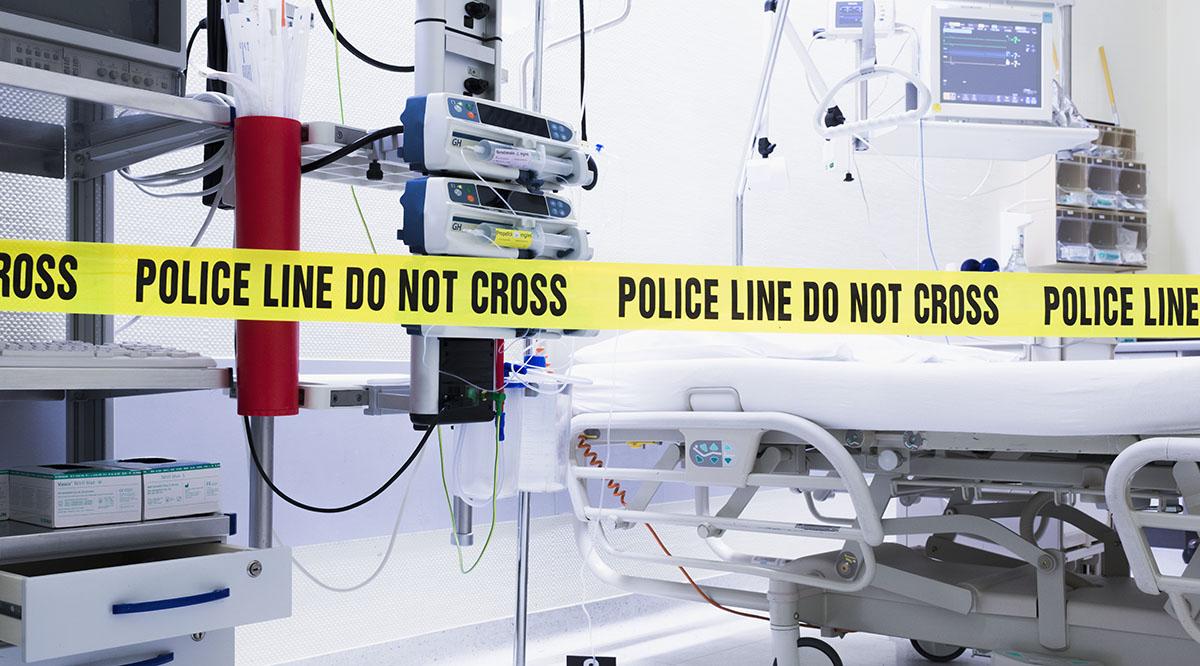Workplace Violence in the Emergency Department
Workplace violence (WPV) in the emergency department is entirely too common. Emergency medicine has one of the highest rates of WPV each year (Hartnett & Jasani, n.d.). The movement against WPV in healthcare is geared toward resources for nurses, as they spend the majority of the time with a patient, but it is an important factor for techs, CNAs, doctors, and any healthcare staff present in the midst of an incident. I have worked in the emergency department for about seven or eight months now and I have seen and heard of at least five or six different incidents of WPV, one of them being my own experience. The types of WPV range from tight grips in which a patient refuses to let go (this was the matter in my case) to having bones in the face or hand broken to the point where someone’s career is ended. During my orientation on the job, I was informed that the reason we have signs for some patients saying “see patient’s nurse before entering room” is because a nurse was killed by a patient when she was not fully informed of the background of a patient.
This leads to primary trauma being prevalent on the job for healthcare workers as well as the already established secondary (vicarious) trauma that is frequently experienced by first responders in the field and in the emergency room. One of the first steps to resolving WPV as a whole is to know how often it is happening, who is perpetrating it, and who is being targeted. One of the main barriers to this is the fact that staff often do not know what acts constitute violence (Stene, Larson, Levy, & Dohlman, 2015). I was surprised that my incident had to be reported as WPV. It was scary, of course, because the guy was like 6’5″, 200-something pounds, psychotic, and wouldn’t let go of my wrist that he was holding incredibly tightly, but it didn’t seem like a particularly violent act (though my wrist was and still is sprained). It wasn’t until I had to document the report (because security had to be called) that I was told by a senior nurse that the proper documentation would be listed under WPV.
Most healthcare workers in the emergency room report that they feel that violence is an expected part of their job as a part of the emergency department (Hartnett & Jasani, n.d.) I think that part of this is due to the fact that many times, even when not necessarily indicated, police will bring in patients who are a risk for violence. Then when we try and press charges because we’ve been assaulted, the police will often want to leave that patient at the hospital because they don’t have the resources to deal with them or believe they still have to be treated, even when the doctors have cleared the patient. This also leads to a large number of healthcare workers not pressing charges against those who perpetrate WPV. Even when our employers back us up, this lack of support from the other emergency services that exist for purposes such as responding to WPV leads to a sense of learned helplessness. Asking for help feels like it won’t do that much, so people don’t ask for help. We just expect this to be a part of the job.
This expectation, primary trauma, and secondary trauma are all significant factors leading to professional burnout and stress disorder symptomology (not to mention the actual physical trauma that often accompanies WPV).
References
Hartnett, E., Jasani, G. (n.d.) Emergency Medicine on the Frontline: Workplace Violence in the Healthcare Setting. AAEM and Student Association. Retrieved from https://www.aaemrsa.org/advocacy/resources/workplace-violence
Stene, J., Larson, E., Levy, M, & Dohlman, M. (2015). Workplace violence in the emergency department:
Giving staff the tools and support to report. The Permanente Journal, 19(2), 113-117. doi: 10.7812/TPP/14-187

3 comments
Hey Hope,
This is a very interesting (and scary!) topic that I don’t think many people think of when thinking about workplace violence. I’m sorry that you were involved in such a situation and glad you’re overall okay! After reading, I’m also glad that you had people that supported you and pushed you to report as WPV. I can see how something like this can lead to trauma and PTSD- I think this should be a more talked about topic and appreciate your blog post about it!
I have a very dear friend who used to work in one of the busiest ERs in Baton Rouge and heard the stories of some of the dangers she had to endure. You are probably too young to remember the episodes in the TV series ER, where a doctor and a nurse are stabbed by a patient. There is also the episodes in Grey’s Anatomy when they have an active shooter in the hospital. I have found both to be good starting points to discuss this issue and provide a relatable example for people who don’t work in the medical or criminal justice fields.
Hope,
Well-written blog post! Your post raised an interesting point involving a term I was unfamiliar with, compassion fatigue. Compassion fatigue is a combination of burnout and secondary traumatic stress. As you mentioned, trauma is an unfortunate result of workplace violence, especially within the health care setting. Additionally, there is secondary traumatic stress, which is stress experienced due to seeing others experience trauma. I’m sure in an emergency room this type of stress is inevitable, especially your story regarding the death of a nurse due to a patient’s background.
Overall, great post!
Cady Balde
Comments are closed.